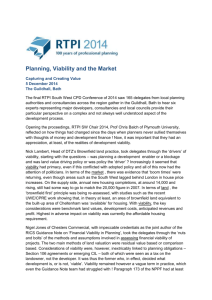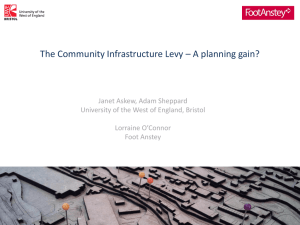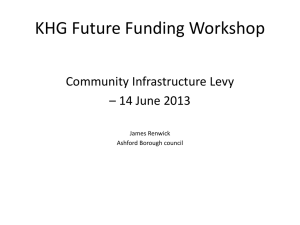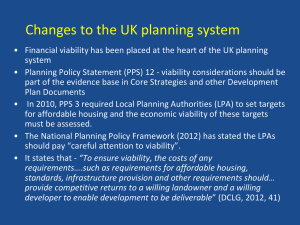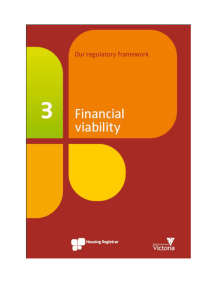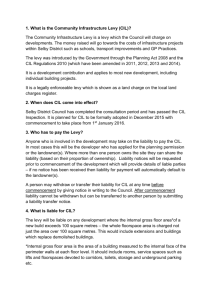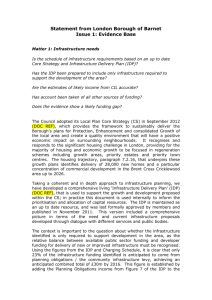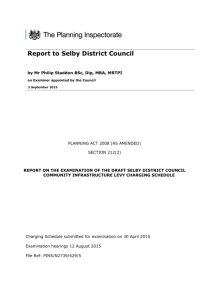Funding Infrastructure Provision through value capture : Examining
advertisement
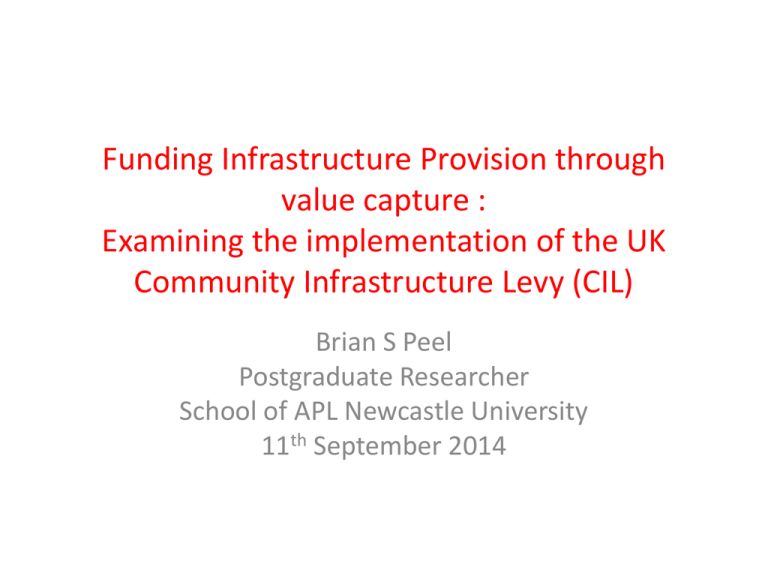
Funding Infrastructure Provision through value capture : Examining the implementation of the UK Community Infrastructure Levy (CIL) Brian S Peel Postgraduate Researcher School of APL Newcastle University 11th September 2014 Introduction • Value Capture and Viability Assessments – History of Value Capture Policy in UK – Emergency of CIL as a Policy – Undertaking Viability Assessments – Investigation of Policy Implementation Process using focus on CIL & Viability Assessments • Role of Planning and Role of Planners – Emerging Discourses – Value Capture & Viability – Initial Findings from Research History of value capture policy in UK • National Taxation (1947 – 1985) – – – – Development Charge 1947 (100%) Betterment Levy 1967 (40%) Development Gains Tax 1973 (30%) Development Land Tax 1976 (80% and 60%) • Planning Gain – site by site negotiation (1983 onwards) – s57 of Town and Country Planning Act 1983 – s106 of Town and Country Planning Act 1990 – Planning Obligations from 1991 • Community Infrastructure Levy (2010 – onwards) Emergence of the CIL Policy • • • • Barker Report – Delivery of Development Demise of Planning Gain Supplement Planning Act 2008 – Retention by Coalition Community Infrastructure Levy 2010 - 2014 – CIL is a type of Impact Fee • Objectives of CIL & Criticisms of S106 – Transparency, Certainty and Efficiency Implementation of CIL • Viability Assessment is at the heart of CIL • “They will need to draw on the infrastructure planning evidence that underpins the development strategy for their area. Charging authorities should use that evidence to strike an appropriate balance between the desirability of funding infrastructure from the levy and the potential impact upon the economic viability of development across their area” (DCLG, 2014). Viability Assessments (1) • • • Three Key Elements in Guidance – (1) Return to Landowner as incentive to sell land (Threshold Land Value) – (2) Return to Developers to undertake development (Profit Level) – (3) Assessment of Cumulative Impact of Policy Burden to fund Value Capture as well as other policy standards (eg code for sustainable homes) (Policy Costs) Two Types of Viability Assessment – Plan Making – Area Wide Appraisal for Viability of Development Plan – Development Management – Site by Site negotiation of s106 agreements CIL Viability Assessment = Area Wide Appraisal (Two elements) – (1) Residual Appraisal (used on hypothetical site appraisals) – Gross Development Value LESS Development Costs + Profit Level + Policy Costs = Residual Land value – (2) Threshold Land Value – “the value at which a typically willing landowner is likely to release land for development “ (Harman Report 2012) Viability Assessments (2) • • • • • • Compare Threshold Land value with Residual Land Value HCA Guidance (2011) Gross Harman Guidance (2012) Development Value DEVELOPMENT RICS Guidance (2012) COSTS DCLG NPPG (2014) Inconsistency/Conflicting views DEVELOPERS PROFIT Calculation – Use of Evidence of one CUMULATIVE – Basis of Policy Assumptions effects POLICY COSTS THRESHOLD LAND VALUE RESIDUAL LAND VALUE others (3 way trade off) Viability Assessment (3) • National Planning Policy Guidance 2014 sets out • Four key principles for understanding Viability in Planning – Evidence based judgement (share evidence & transparency) – Understand past performance (realistic understanding of operation of the market, values and costs and past performance and delivery of obligations) – Collaboration (with landowners, developers etc) – Consistent Approach (comprehensive understanding of viability issues) Research Questions • How is knowledge generated and validated to support planning decisions in relation to the delivery of infrastructure as funded by value capture mechanisms? • Can policy implementation be improved by planners having a better understanding of the decision making of developers and operation of the land and property markets? Policy Implementation: CIL and Viability Assessments as focus • Messy nature of policy implementation in the real world and analysis of behaviours of actors • The concept of Viability, is problematic and contested and not possible to be imposed as a top down solution • Viability involves struggles over meanings and interpretations of evidence • Socially, historically and culturally situated and places emphasis on collaboration and the exchange of knowledge and on communication Research Methodology • Interpretive Policy Analysis to uncover meanings • As contested interpretations and meanings involves power struggles • Foucauldian Based Discourse Analysis – Rationality and Power - Relationships, Practices, Actions and Events • Predetermined Framework of analysis from policy documentation - Hajer (Argumentative Discourse Analysis) • Discursive Struggle of Discourses – identified and analysed for impact on policy implementation Changing Role of Planning • Two Discourses emerge from Policy Documents - Reflect changing Role of Planning • 1) Reduced Public Finance to fund infrastructure to support growth hence need to pursue Value Capture • 2) Emphasis on Delivery of Development to support growth (by Private Sector) and therefore a focus on Viability of development Data Collection & Analysis • Policy Documents (National & Case Studies) • Semi-structured interviews (Key Actors different levels and roles in LPA and others involved in CIL process) • Notes of key meetings and communications • Policy Communities and their roles • Key Events in the process • Key arenas or sites of debate • Key meanings and practices employed in the process • What types of knowledge employed in decision making process Initial Research Findings (1) • Reconstruction of the CIL rate setting process • Planners role in the process – relationships with other actors, professionals, use of consultants • Planners understanding of rate setting process as a calculation rather than an as need to understand the development process? • History of Policy Implementation (s106 and affordable housing) by the LPA • Characteristics of the Development Plan and nature of the supply of sites and Viability Assessment Initial Research Findings (2) • Role of Guidance in Viability Assessments • Technical Calculation v Political Judgement • Challenge of understanding motivations and business models of Developers and Landowners • Challenge of understanding different appraisal models and techniques • Importance of consultation and collaboration • Importance of evidence and interpretation • Implications on Planners skills, culture and values Thank you Any Questions
